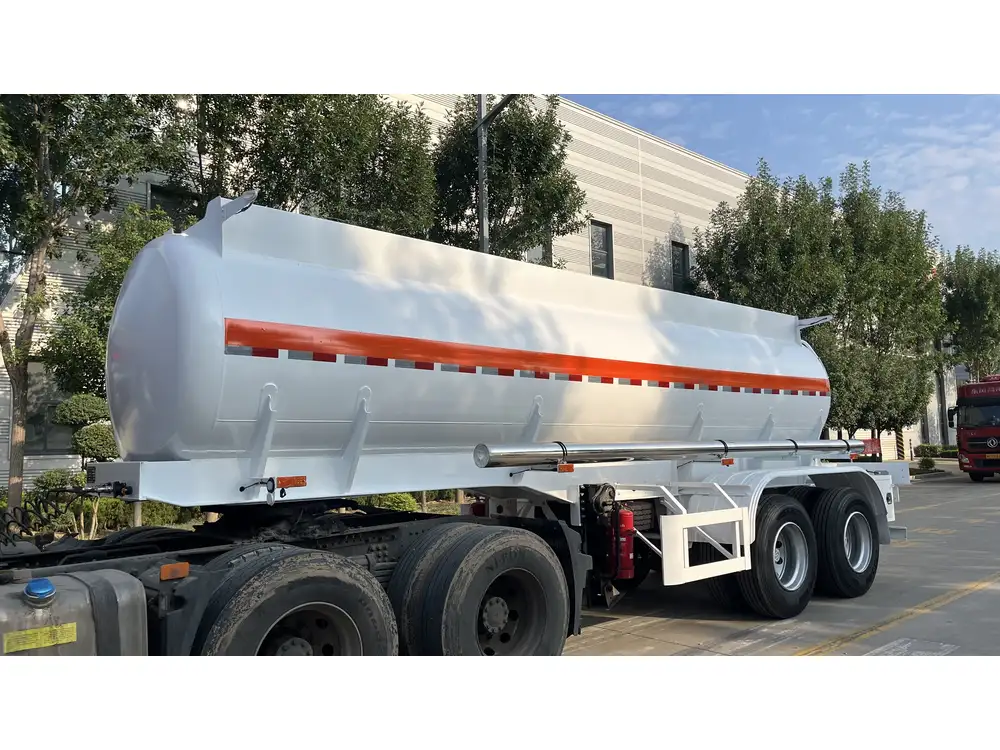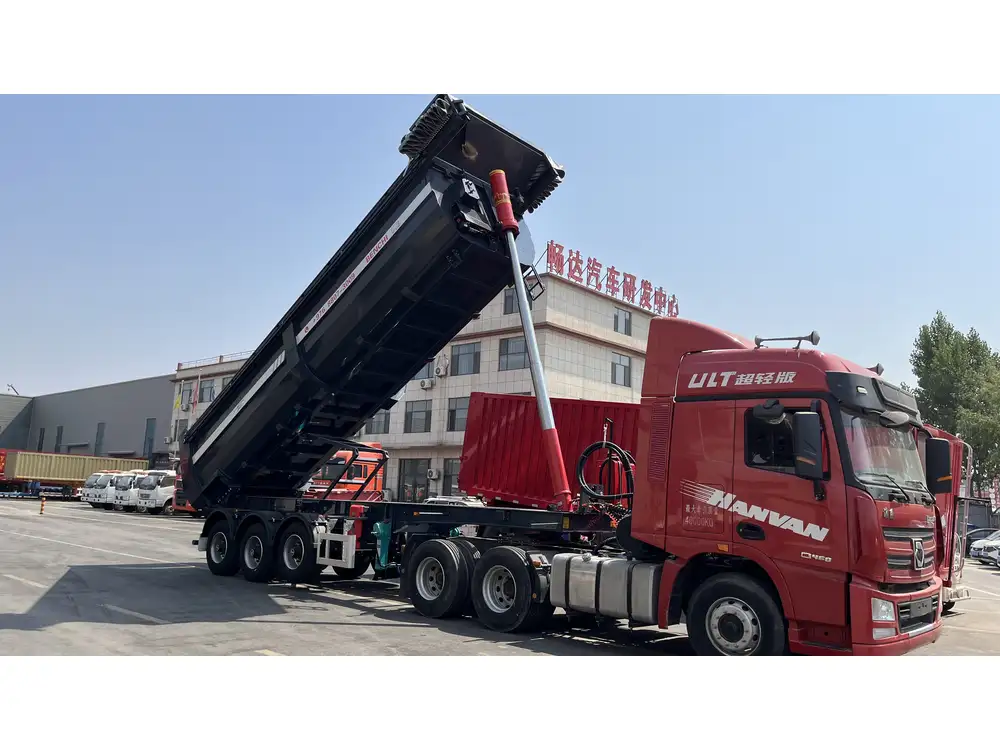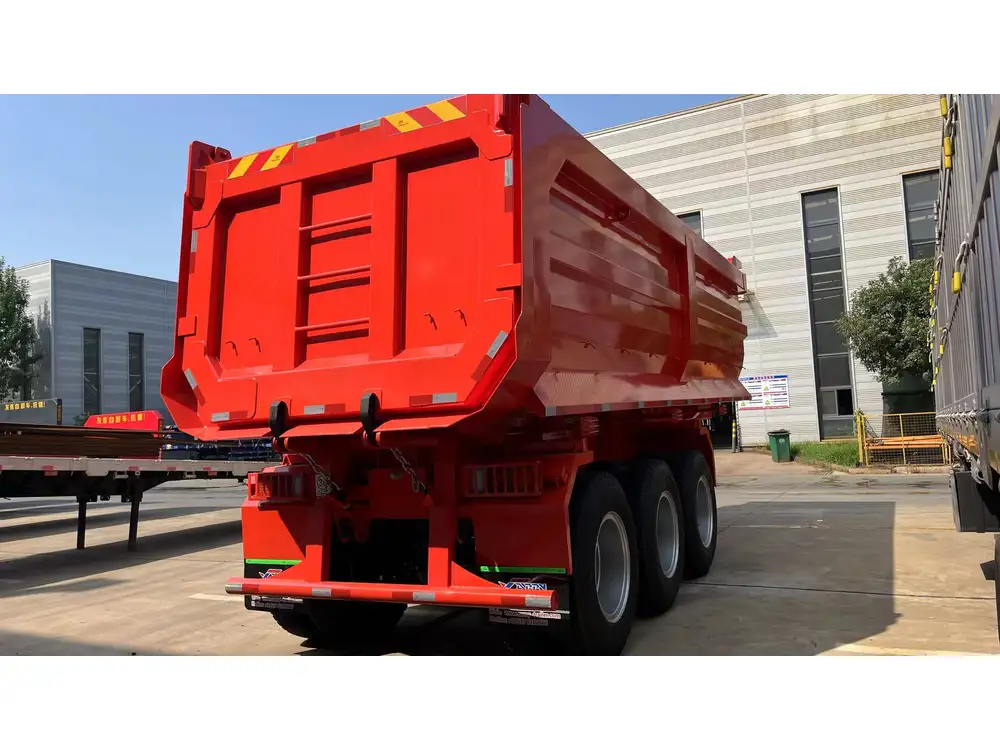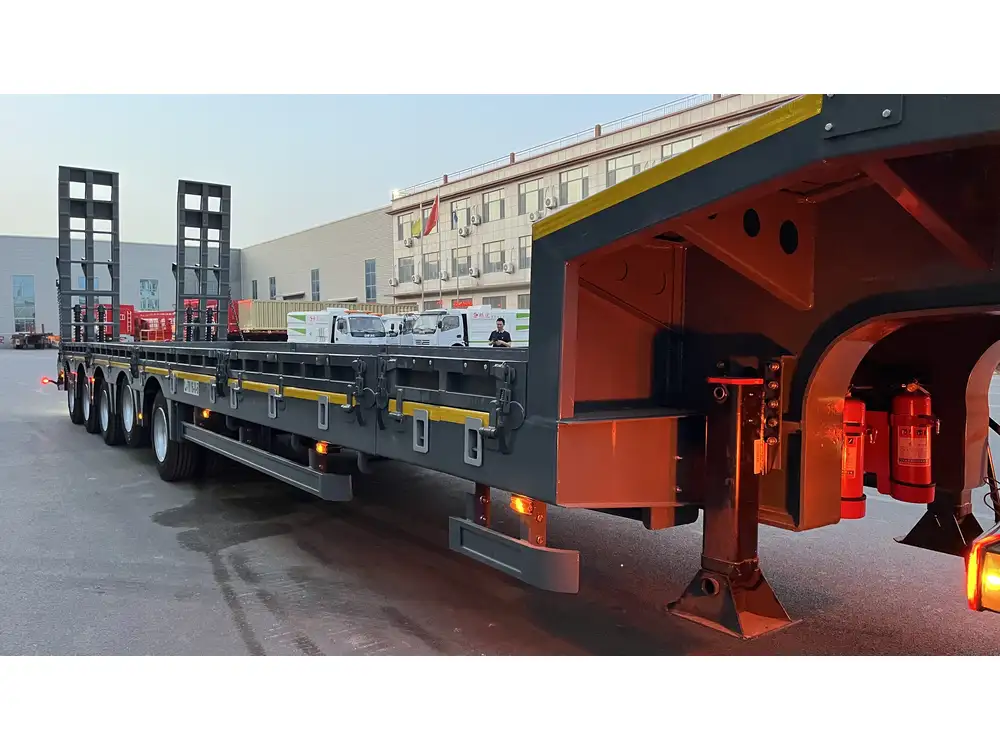When delving into the world of commercial transportation, the semi-trailer serves as an essential component of the logistics and freight system. With their varying designs and applications, understanding their dimensions—in particular, their lengths excluding the cab—is critical for fleet managers, transport companies, and logistics coordinators. This article comprehensively analyzes the topic of semi-trailer length without the cab, detailing specifications, benefits, regulatory considerations, and practical recommendations for optimization.
The Basics of Semi-Trailers
A. Definition of Semi-Trailer
A semi-trailer is a trailer that does not have a front axle and relies on its connection to a tractor unit (the cab) for support. Typically designed for transporting goods, these trailers are versatile across different sectors, including agriculture, construction, and retail.

B. Key Components
Understanding semi-trailer dimensions necessitates familiarity with its components:
| Component | Description |
|---|---|
| Fifth Wheel | The coupling mechanism that connects the trailer to the cab. |
| Axles | Support the weight of the trailer and its cargo. |
| Suspension System | Determines ride quality and load distribution. |
| Floor | The base that holds the cargo, can vary in material. |
Typical Lengths of Semi-Trailers
A. Standard Lengths
The average semi-trailer length can vary significantly based on the type of trailer and its intended use:
- Standard Dry Van Trailers: Generally 48 to 53 feet long.
- Flatbed Trailers: Typically 48 to 53 feet as well.
- Refrigerated Trailers: Usually 48 to 53 feet long.
- Tanker Trailers: Can range from 30 to 60 feet, depending on capacity.

B. Length Constraints by Region
Regulations often dictate maximum semi-trailer lengths without including the cab. Understanding these constraints is vital for compliance and efficient route planning.
| Region | Maximum Trailer Length (without cab) |
|---|---|
| United States | Typically 53 feet in most states |
| Canada | Varies, commonly 53 feet |
| European Union | Generally 16.5 meters (approximately 54 feet) |
The Importance of Knowing Trailer Length
A. Load Capacity
The length of a semi-trailer directly influences its load capacity. Longer trailers can accommodate more cargo, potentially increasing profitability. However, it is crucial to balance length with weight regulations.

B. Maneuverability
Choosing the appropriate length affects maneuverability. Shorter trailers are easier to handle in urban environments, while longer trailers might be more suitable for long-haul routes where space isn’t restricted.
C. Compliance and Regulations
Different jurisdictions enforce regulations regarding trailer lengths, affecting route planning and operational efficiency. Operators must ensure compliance with federal and state regulations to avoid fines and ensure safety.
Factors Influencing Semi-Trailer Selection

A. Type of Cargo
The type of cargo being transported plays a significant role in determining the ideal semi-trailer length. For instance:
- Bulk Goods: Require longer trailers for capacity.
- Specialized Equipment: May necessitate shorter, customized trailers for maneuverability.
B. Transportation Method
The nature of the transportation method (local, regional, long-haul) influences the semi-trailer length. Long-haul routes may benefit from larger trailers due to fewer stops and increased payload potential.
C. Equipment Compatibility
It is essential to ensure that the selected semi-trailer is compatible with the cab, both in terms of coupling system and weight distribution. This facilitates efficient operations and minimizes wear on equipment.

Calculating Optimal Trailer Length for Your Business
A. Understanding Your Needs
To determine the best semi-trailer length for your operations, consider the following:
Cargo Types:
- Evaluate the dimensions and weight of your typical cargo.
Distance and Routes:
- Assess the typical distances your vehicles will cover and the nature of the roads (urban vs. highway).
Regulatory Limits:
- Review applicable regulations in your operating regions to ensure compliance.
B. Conducting a Cost-Benefit Analysis
Before investing in a specific type of semi-trailer, utilizing a cost-benefit analysis can provide clarity:
| Item | Long Trailer | Short Trailer |
|---|---|---|
| Increase in Capacity | High | Moderate |
| Maneuverability | Low | High |
| Compliance Cost | Variable (may require permits) | Lower |
| Initial Purchase Cost | Higher | Lower |
| Maintenance Costs | Higher (larger system) | Lower (smaller system) |

C. Real-World Scenarios
In practice, consider the stories of companies that optimized their fleets. Suppose a logistics firm transitioned from 48-foot to 53-foot trailers. They noted an increase in load capacity, reducing transport costs per ton while staying compliant, due to investments in driver training regarding maneuverability with longer trailers.
Maintaining an Efficient Fleet
A. Regular Inspections and Compliance Checks
Regular inspections ensure the safety and longevity of both trailers and cabs. Operators should adhere to these best practices:
Routine Maintenance:
- Schedule inspections to check tires, brakes, and suspension systems.
Documentation:
- Keep accurate records of compliance with length regulations.
Driver Training:
- Invest in driver training programs focusing on maneuverability and safe operation of longer trailers.

B. Efficient Loading Practices
Optimizing loading practices not only ensures compliance with weight regulations but also maximizes the trailer’s length:
- Load Distribution: Maintain even weight distribution across axles to enhance stability.
- Types of Cargo: Utilize specialized loading techniques for specific types of cargo to maximize trailer length utilization.
Innovations Impacting Semi-Trailer Design
A. Advances in Materials
The use of advanced materials such as lightweight composites can influence the design of semi-trailers without compromising strength, potentially allowing for longer trailers under regulatory limits.

B. Technology Integration
Technological advancements in tracking and monitoring of trailers can enhance operational efficiency:
| Tech | Benefits |
|---|---|
| GPS Tracking | Real-time location and route management. |
| Load Sensors | Enhanced payload management and compliance. |
| Automated Systems | Reduced driver workload and improved safety. |
Conclusion: Making the Right Choice for Your Operation
Understanding the semi-trailer length without the cab and its various implications is vital for any business involved in terrestrial freight. From regulatory compliance and cost analysis to technological advancements, the decisions surrounding semi-trailer selection are multifaceted and intricate.
By taking into account specific operational needs, available technologies, and industry standards, fleet managers can effectively determine the optimal semi-trailer length for their logistics operations. As we move toward a future that embraces innovation and efficiency, staying informed and adaptable will ensure that your fleet remains competitive and responsive to the dynamic logistics landscape.
Next Steps for Your Fleet
- Evaluate Current Operations: Assess whether your current trailer lengths meet your operational needs.
- Research Local Regulations: Ensure compliance with the latest regulations in your areas of operation.
- Invest in Technology: Consider integrating technology solutions that enhance fleet visibility and performance.
Ultimately, choosing the right semi-trailer length is more than simply adhering to regulations—it is about enhancing efficiency, reducing costs, and establishing a competitive edge in the freight and logistics industry.



